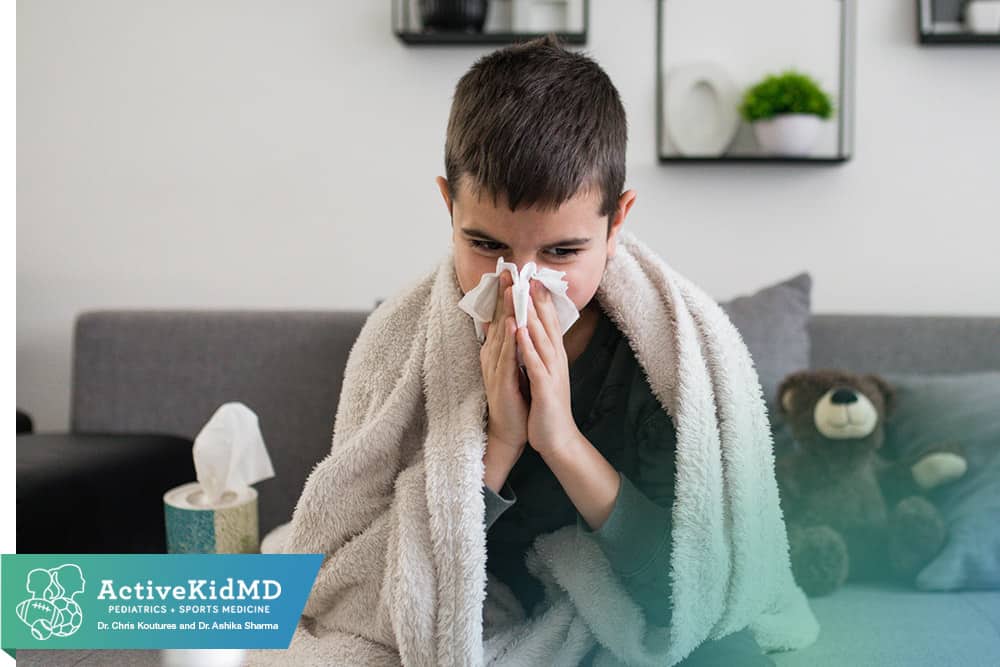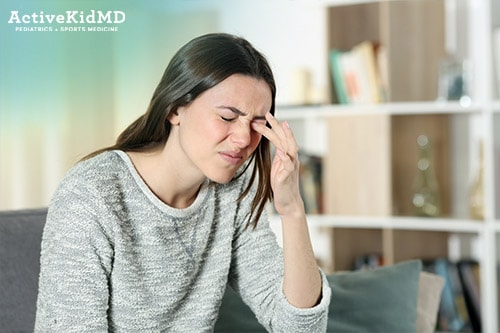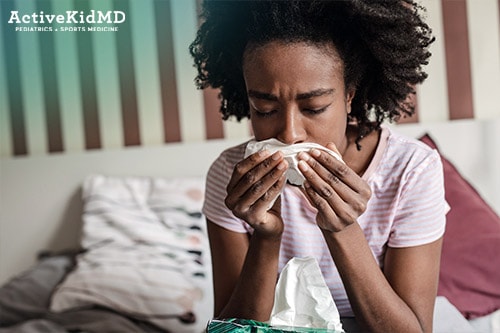The Summer and Fall months are peak times for seasonal allergies:
Allergies often start in childhood and continue throughout life. Although symptoms from childhood allergies can’t be cured, with proper care they can usually be kept under control. Allergies are caused by the body’s reaction to substances called “allergens,” which trigger the immune system to react to harmless substances as though they were attacking the body.
When to Suspect an Allergy
Some allergies are easy to identify by the pattern of symptoms that follows exposure to a particular substance. But others are subtler and may masquerade as other conditions. Here are some common signs or clues that could lead you to suspect your child may have an allergy.
- Nasal stuffiness
- Sneezing
- Throat clearing
- Nose rubbing
- Sniffling
- Snorting
- Sneezing
- Itchy, runny eyes
Be suspicious of allergies in children who have repeated or chronic cold-like symptoms that last more than a week or two, or that develop at about the same time every year.
A common question I hear is “How can you tell the difference between a cold and allergies?”
Allergies never have fever; colds rarely have itchy/watery eyes. The mucous with allergies is usually clear/watery while a cold usually causes thicker mucous.
Itching or tingling sensations in the mouth and throat are not usually a complaint with a cold but are the hallmark of an allergy problem.
Common Allergens in Home and School
In the Fall months, many indoor allergens cause problems for children because they are inside of home and school for longer periods of time. This places them in more contact with common allergy triggers such as:
- Dust which contains dust mites and finely ground particles from other allergens, such as pollen, mold, and animal dander
- Fungi including molds too small to be seen with the naked eye
- Furry animals including cats, dogs, guinea pigs, gerbils, rabbits, and other pets
- Clothing and toys especially those made, trimmed, or stuffed with animal hair
- Latex found in household and school articles such as rubber gloves, toys, balloons; elastic in socks, underwear, and other clothing
Controlling Allergy Symptoms
To control allergy symptoms:
- It’s helpful to use air conditioners, where possible, to reduce exposure to pollen in both your home and your car.
- Reduce exposure to molds that are present in the Spring and late Summer, particularly around areas of decaying vegetation. Children with mold allergies should avoid playing in piles of dead leaves in the fall.
- Limit contact with places that have food for dust mites such as flakes of human skin). That means they are most commonly found in upholstered furniture, bedding, and rugs.
- Use padded furnishings, such as mattresses, box springs, pillows, and cushions should be encased in allergen-proof zip-up covers, which are available through catalogs and specialized retailers.
- Wash linens weekly, and other bedding such as blankets, every 2 to 3 weeks in hot water to kill the dust mite.
- Replace pillows every 2 to 3 years.
Medications for Allergies
Allergies cause their symptoms because of histamines. Histamines are released in response to an allergen, so the treatment is commonly an antihistamine.
The most commonly used antihistamines include:
- Benadryl 🡪 The go-to med for hives. It has a fast onset but can make kids very drowsy.
- Zyrtec 🡪 Fast acting and much less sedating. Comes in liquid and pill form.
- Xyzal 🡪 Is similar to Zyrtec and some kids respond to this better than Zyrtec and vice versa.
- Children’s Claritin 🡪Not as drowsy as Zyrtec but can take longer to kick in.
For further help with controlling other allergy symptoms, the following medications may be used:
- Nasal saline 🡪 helps flush the nose of those allergens (pollen). You can do this every evening if you want!
- Nasal steroids 🡪 The two main options are Flonase and Nasacort.
Nasal steroids are meant for use in high allergies seasons as first-line prevention because they can reduce swelling and inflammation. - Eye allergies 🡪 Our favorite is OTC Zaditor. Sometimes prescription eye drops are not covered by insurance.
You should talk to your doctor if your child needs one or more of these allergy medicines. Always confirm all allergy medication dosing with your pediatrician as some products (such as Benadryl) can be quite sedating.
Working With Your Child’s Pediatrician
Your child’s allergy treatment should start with your pediatrician. Although there are many over-the-counter antihistamines, decongestants, and nasal sprays, it is very important that you work with a pediatrician over the years to make sure that your child’s allergies are correctly diagnosed, and the symptoms properly treated.
For more information on bug bites and allergies, log onto our website at activekidmd.com or the American Academy of Pediatrics website healthychildren.org.




